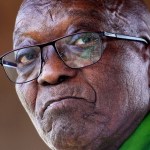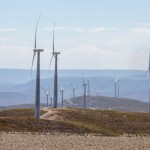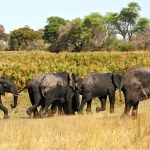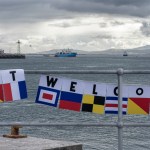Jonestown, 40 years on
The horrendous mass suicide that gave birth to the phrase ‘Don’t drink the Kool-Aid’
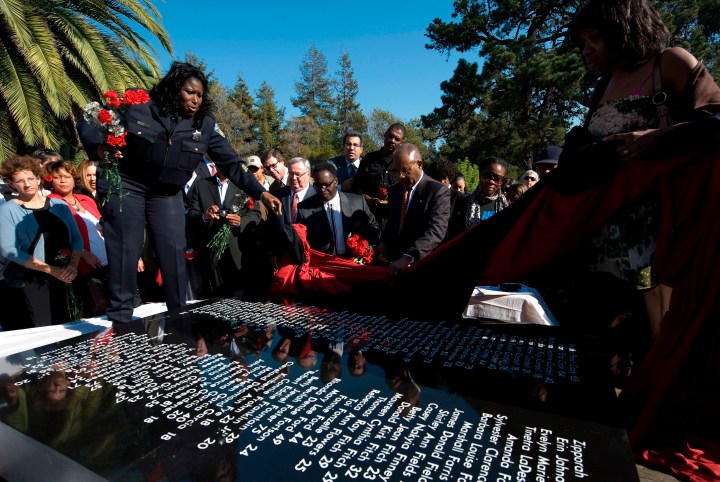
After 40 years, the horrific mass suicide of Jonestown, Guyana under the leadership of Jim Jones remains astounding, barely explicable. Was it a one-time, unique event, or a harbinger of more to come?
‘Men, it has been well said, think in herds; it will be seen that they go mad in herds, while they only recover their senses slowly, and one by one.’
– Charles MacKay, Popular Delusions and the Madness of Crowds, 1841
It may come as a shock to realise that the mass suicide/murder in a tropical forest clearing in an isolated part of Guyana in South America, as well as the murders of an American congressman and his travelling party investigating the circumstances at the compound before the mass deaths, all took place 40 years ago this week.
Who would have expected that hundreds of Americans would fall under the control of a spellbinding prophet; that they would abandon their communities, families, and friends to live in the remote expanses of a foreign, third world nation; and then, in extremis, on their leader’s command, kill their own children, some of their more recalcitrant colleagues, and then, finally, themselves – all by drinking a cyanide-laced potion of fruit punch.
In the end, when the gruesome toll was added up, it had become the largest mass killing of Americans (if you exclude certain events on the American frontier between Native Americans and settlers or the army) until 9/11 had occurred. The whole implausibility and horror of Jonestown, the settlement named after its leader, Jim Jones, made headlines and anguished hand wringing, and sombre, introspective analysis about the “why” and the “how” of these appalling crimes. By the time the killing spree was all over, 909 people were dead and observers remained puzzled by what it had all meant.
Jones did not, at least initially, seem like a perfect candidate to plan and perpetrate a mass murder, but more like one of those marginal figures that have always populated the religious margins in American life. Those are the kind of preachers with a Bible in hand, a storefront church or a tent, and a fierce message of faith and individual salvation, who have inhabited the small towns and run-down neighbourhoods of big cities for a long time, as exemplified in Sinclair Lewis’ novel, Elmer Gantry.
Jones had been one of those charismatic figures when he first established the Peoples Temple, a Christian sect, in Indianapolis, Indiana, back in the 1950s. Unlike many of these churches, however, Jones’ ministry had assailed racism and his congregation was a racially mixed one, unlike so many others in America. (The Rev Martin Luther King had once wryly, but accurately, remarked that 11am on Sunday was the most segregated hour in America).
By 1965, Jones had moved his flock to Ukiah, a small town in northern California, and then, later, on to San Francisco. There, he had more chances for converts, but there was also greater scrutiny by the media and others of his group. By that point, he and his church had come under the spotlight for financial improprieties, and allegations of physical abuse of some congregants, including children. In response to this growing criticism, increasingly suspicious, even paranoid, Jones encouraged his congregation to escape with him to Guyana in northern South America, where, he told them, they would build an idiosyncratic, socialist land of milk and honey.
Not particularly surprisingly, Jonestown was not as Jones had promised his flock. Church members laboured hard in the fields in a brutal climate – and there were harsh punishment regimens for those who criticised their leader. Along the way, members’ passports were held, preventing the departure of dissenters, mail was censored, and members were encouraged to inform on one another – and to attend long, late-night group meetings.
Recalling these events, The Guardian newspaper had noted in its backward look:
“Jonestown had little reason to expect interference from Guyana – a ‘co-operative republic’ whose government happily ignored signs of the cult’s authoritarian and paranoid bent. Back in the US, however, parents of Jonestown inhabitants – concerned by the strange letters, or lack of letters, they received from their children – had been lobbying the government to investigate. After a family in the US won a custody order for a child in Jonestown, paranoia escalated. The commune became an armed camp, ringed by volunteers with guns and machetes, threatening to fight outsiders to the death.
“During the (imaginary) siege, Black Panthers Huey Newton and Angela Davis spoke to Jonestown inhabitants by radio patch to voice solidarity. Davis told Jonestown inhabitants that they were at the vanguard of revolution, and right to resist what she called ‘a profound conspiracy’ against them.”
By now, Jones’ physical and mental health was on a downward trajectory, his addiction to prescription drugs was escalating, and he had become convinced the US government, and other outside forces, were all conspiring to destroy his community. By this point, Jones had moved to forcing congregation members to participate in mock suicide drills late at night.
In 1978, information from former members of Jones’ congregation and increasingly concerned relatives of current members prompted US Congressman Leo Ryan (a California Democrat) to travel to Jonestown and investigate the settlement. Accordingly, on 17 November 1978, Ryan, together with a group of journalists and other observers, arrived in Jonestown. At first, their visit seemed to go well; but the next day, as Ryan’s delegation was about to leave, a number of Jonestown residents approached the congressman’s group and asked for help to leave Guyana.
Jones became agitated at the impending defection of his followers, and one of Jones’ lieutenants attacked Ryan with a knife. The congressman managed to escape unharmed, but Jones then ordered Ryan and his companions ambushed and killed at the airstrip as they attempted to leave, and the congressman and four other people were murdered as they boarded their charter aircraft. One of those attacked at the airstrip was Congressman Ryan’s aide, Jackie Speier. Speier was shot five times, survived, and is now, herself, a congresswoman from California.
Meanwhile, back in Jonestown itself, Jones demanded his entire congregation gather in the settlement’s main building to join in what he labelled a “revolutionary act”. The youngest members of the Peoples Temple were the first to die, as parents and nurses used syringes to drop a potent mix of cyanide, sedatives and powdered fruit juice into children’s throats. And then the adult members drank the poison-laced concoction themselves, under the watchful gaze of armed guards.
By the time Guyanese officials arrived at the Jonestown compound the next day, the astounding, nearly unbelievable, gruesome death tableaux was arrayed before them, with many of the dead locked in final embraces. A few of the congregation had managed to escape into the jungle as the suicides were taking place, and several dozen more, including a number of Jones’ sons, had survived because they were elsewhere in Guyana at the time of the mass suicide.
Looking back at these events, The Guardian observed,
“The Jonestown massacre was, before 9/11, the largest single incident of intentional civilian death in American history. More than 900 people died, many children. It was also a devastating cultural trauma: the end of the last strains of a certain kind of 1960s idealism and 1970s radicalism. Jonestown’s legacy lives on in the ironic phrase ‘drink the Kool-Aid’. (In actuality it was Fla-Vor-Aid.) Although he would later become a symbol of the darker side of the west coast counterculture, Jim Jones was born to a poor family in Indiana. Described as an intelligent and strange child, Jones was instinctively attracted to religion, especially charismatic Christian traditions like Pentecostalism. He cut his teeth as a street preacher, and was, unusually for the time and place, a passionate advocate for racial equality.”
The Guardian went on:
“Although Jones’s followers would later be stereotyped as sinister, brainwashed idiots, the journalist Tim Reiterman argues in his seminal book on the subject that many were ‘decent, hardworking, socially conscious people, some highly educated’, who ‘wanted to help their fellow man and serve God, not embrace a self-proclaimed deity on earth.’ The Peoples Temple advocated socialism and communitarian living and was racially integrated to an exceptional standard rarely matched since….
“By the 1970s, the Peoples Temple, now based in San Francisco, had gained significant political influence. Jones’s fierce advocacy for the downtrodden earned him the admiration of left-wing icons like Angela Davis and Harvey Milk and the support of groups like the Black Panthers – a tragically misguided political affinity, given that more than two-thirds of Jonestown’s eventual victims were African-American.”
The paper cited Shiva Naipaul, the younger brother of VS Naipaul, a writer who had contemplated this horror, when he had observed that Jones’ cult, at its core, was yet one more fundamentalist religious project – “obsessed with sin and images of apocalyptic destruction, authoritarian in its innermost impulses, instinctively thinking in terms of the saved and the damned”. As a result, Jones’ gospel “was neither racial justice nor socialism but a messianic parody of both”.
Describing the ghastly scene the day after the mass death, The Guardian recalled:
“When Guyanese troops reached Jonestown the next morning, they discovered an eerie, silent vista, frozen in time and littered with bodies. A tiny number of survivors, mainly people who had hidden during the poisoning, emerged. One elderly woman, who slept through the entire ordeal, awoke to discover everyone dead. Jones was found dead of an apparently self-inflicted gunshot.”
Speaking about this event the other day with some acquaintances, our conversation had swivelled towards the nature – and delusions – of faith, and what happens when it all goes wrong, as Jones’ movement so obviously did. South Africa, of course, is not immune to such perversions of faith, what with preachers who lure congregations to move abroad wholesale, or who combine sexual predation and promises that insect repellent or petrol will be rendered harmless, along with the divine revelations of earthly success and a reserved ticket to the right sort of afterlife, if congregants would just believe strongly enough. And, of course, the world now seems awash with cults who mix a version of religious fervour and the promise of belonging, together with murderous intent in the here and now – and accompanied with heavy weaponry.
Less extremely, clever but entirely cynical politicians (fill in your favourite name here) have similarly capitalised on this need to belong, to fill the hole in the soul, and to answer the eternal questions of why we are here and what is our purpose in life. These are challenges of the modern world that have too often gone unanswered by contemporary spiritual leaders who no longer have the easy certainties of the Medieval age or any other period when new religious faiths arise to answer such human challenges. Now, of course, the ever-faster pace of deep-seated technological change and their consequent social disruptions make it ever more certain there will be fertile ground for yet more Jim Joneses, even if mass suicide is not always an inevitable outcome. DM



